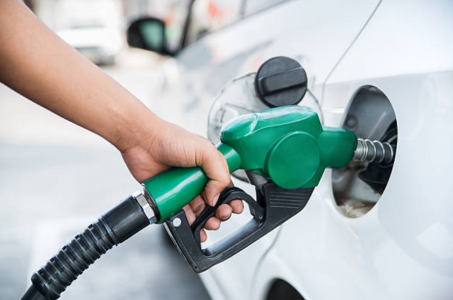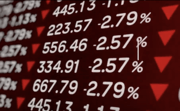Petrol price hits $2 mark as Middle East conflict drives global oil surge
By
Gian T
- Replies 0
If you’ve filled up your car lately and winced at the price, brace yourself—petrol could soon hit $2 a litre across Australia, and possibly even higher.
The escalating tensions in the Middle East, particularly following recent US military strikes on Iranian nuclear facilities, have sent shockwaves through global oil markets.
For Aussie households already feeling the pinch from the rising cost of living, this is yet another blow to the budget.
Let’s break it down. The price you pay at the pump is closely tied to the international price of oil, which is set by the global market.
The key benchmark, Brent crude, spiked above $US80 a barrel after the US strikes, up from just over $US77 at the end of last week.
That might not sound like much, but oil prices have surged more than 20 per cent in June alone—an increase of about $US14 a barrel—thanks to mounting tensions between Israel and Iran.
The situation escalated further when Iran’s parliament reportedly approved a measure to close the Strait of Hormuz, a narrow waterway through which about 20 per cent of the world’s oil supply passes.
The mere threat of this closure sent oil supertankers scrambling, with some abruptly turning away from the region.
If the strait were actually closed or attacked, oil prices could skyrocket to $US100 a barrel or more, with major consequences for the global economy.
According to CBA energy analyst Vivek Dhar, if oil prices stay in the $US75–80 range, we’re looking at petrol prices climbing to $1.90–$2 a litre—up from last week’s average of $1.75.
If things get worse and oil hits $US100 a barrel, we could see prices soar to $2.30–$2.40 a litre.
Even the more conservative estimate from AMP’s chief economist, Shane Oliver, puts the price at $2.13 a litre.
For the average household, that’s a jump to $74.55 a week on petrol—about $14 more than now.
Over a year, that’s an extra $780 out of your pocket, just to keep your car on the road.
It’s not just about what you pay at the bowser. Higher fuel prices flow through to almost every part of the economy.
Transport costs go up, which means groceries and other goods can get more expensive too.
Shane Oliver warns that this could add 0.3 percentage points to headline inflation, and possibly more if the situation worsens.
That’s bad news for anyone hoping for a Reserve Bank interest rate cut in July—analysts now say August is more likely, as the RBA waits to see how things play out.
The International Monetary Fund (IMF) has also weighed in, warning that ongoing turmoil in energy markets could further slow global economic growth.
With the world already under pressure from trade tensions and inflation, another oil shock could be the straw that breaks the camel’s back.
Market experts are surprised that financial markets haven’t reacted more strongly—yet. Steve Miller from GSFM Funds Management points out that the real risk is uncertainty.
If Iran retaliates in a way that disrupts oil supplies, the economic consequences could be severe, not just for Australia but globally.
Unfortunately, there’s no crystal ball to tell us exactly how this will play out. If tensions ease, prices could stabilise or even fall. But if the situation worsens, we could be in for a long, expensive ride.
 Have you noticed petrol prices creeping up in your area? How are you coping with the rising cost of living? Do you have any tips for saving on fuel? Share your thoughts and advice in the comments below.
Have you noticed petrol prices creeping up in your area? How are you coping with the rising cost of living? Do you have any tips for saving on fuel? Share your thoughts and advice in the comments below.
Read more: Petrol prices could hit $2.20 a litre if Iran-Israel conflict sends oil above $US100 a barrel
The escalating tensions in the Middle East, particularly following recent US military strikes on Iranian nuclear facilities, have sent shockwaves through global oil markets.
For Aussie households already feeling the pinch from the rising cost of living, this is yet another blow to the budget.
Let’s break it down. The price you pay at the pump is closely tied to the international price of oil, which is set by the global market.
The key benchmark, Brent crude, spiked above $US80 a barrel after the US strikes, up from just over $US77 at the end of last week.
That might not sound like much, but oil prices have surged more than 20 per cent in June alone—an increase of about $US14 a barrel—thanks to mounting tensions between Israel and Iran.
The situation escalated further when Iran’s parliament reportedly approved a measure to close the Strait of Hormuz, a narrow waterway through which about 20 per cent of the world’s oil supply passes.
The mere threat of this closure sent oil supertankers scrambling, with some abruptly turning away from the region.
If the strait were actually closed or attacked, oil prices could skyrocket to $US100 a barrel or more, with major consequences for the global economy.
According to CBA energy analyst Vivek Dhar, if oil prices stay in the $US75–80 range, we’re looking at petrol prices climbing to $1.90–$2 a litre—up from last week’s average of $1.75.
If things get worse and oil hits $US100 a barrel, we could see prices soar to $2.30–$2.40 a litre.
Even the more conservative estimate from AMP’s chief economist, Shane Oliver, puts the price at $2.13 a litre.
For the average household, that’s a jump to $74.55 a week on petrol—about $14 more than now.
Over a year, that’s an extra $780 out of your pocket, just to keep your car on the road.
It’s not just about what you pay at the bowser. Higher fuel prices flow through to almost every part of the economy.
Transport costs go up, which means groceries and other goods can get more expensive too.
Shane Oliver warns that this could add 0.3 percentage points to headline inflation, and possibly more if the situation worsens.
That’s bad news for anyone hoping for a Reserve Bank interest rate cut in July—analysts now say August is more likely, as the RBA waits to see how things play out.
The International Monetary Fund (IMF) has also weighed in, warning that ongoing turmoil in energy markets could further slow global economic growth.
With the world already under pressure from trade tensions and inflation, another oil shock could be the straw that breaks the camel’s back.
If Iran retaliates in a way that disrupts oil supplies, the economic consequences could be severe, not just for Australia but globally.
Unfortunately, there’s no crystal ball to tell us exactly how this will play out. If tensions ease, prices could stabilise or even fall. But if the situation worsens, we could be in for a long, expensive ride.
Key Takeaways
- Australian petrol prices could rise to $2 a litre or more in the coming weeks, due to rising global oil prices triggered by US strikes on Iranian nuclear facilities and ongoing Middle East tensions.
- Higher fuel and power costs are set to add further pressure to Australian households already struggling with the rising cost of living, and could delay an expected Reserve Bank rate cut to August.
- Experts warn that if the conflict leads to disruptions in the Strait of Hormuz, oil prices could soar to US$ 100 a barrel, pushing unleaded petrol prices as high as $2.40 a litre and drastically increasing weekly household petrol bills.
- The International Monetary Fund and leading economists caution that ongoing volatility in oil markets poses a serious risk to global economic growth and could further drive inflation both in Australia and worldwide.
Read more: Petrol prices could hit $2.20 a litre if Iran-Israel conflict sends oil above $US100 a barrel








